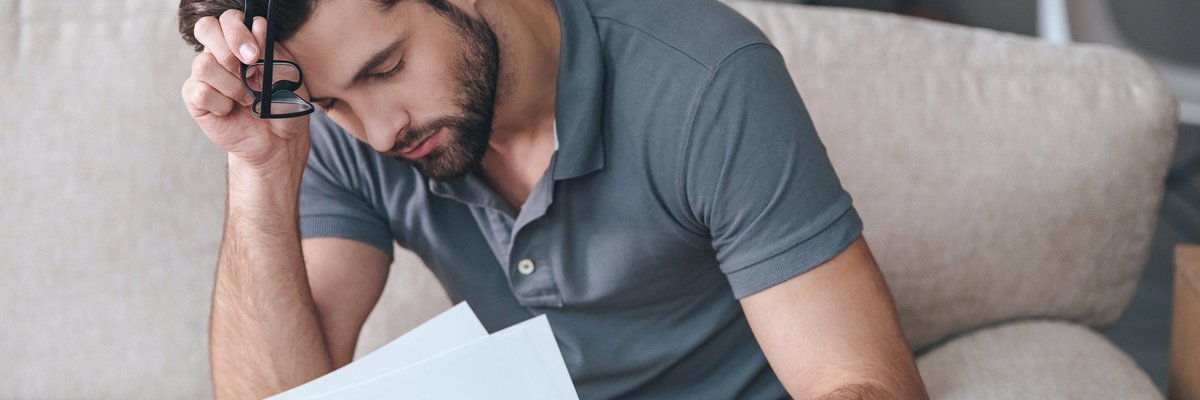Consider This Big Drawback Before Setting Up Autopay on Your Credit Cards
KEY POINTS
- Autopay can help you avoid missing due dates, but if your bank account balance is low, you could wind up with overdraft or insufficient funds fees.
- The best way to use autopay is to keep a cushion in your checking account to cover the withdrawals, as well as your usually weekly purchases.
- You can help stay on top of autopays by using your bank's mobile app to track your balances and transactions.
It's super helpful -- until it isn't.
I have a lot of great qualities, but my memory isn't one of them. I forget things. Regularly. So I tend to embrace tools that help me remember things -- or, better yet, that do them for me so I don't have to remember them.
That's why I love autopay for my credit cards. Sure, I prefer to pay off my cards in full each month to avoid the interest fees. But autopay is my security blanket. I don't have to worry that I'll miss an important due date for my credit cards because they each automatically make the minimum payment well before the due date. Just in case.
Unfortunately, autopay isn't for everyone. It wasn't even for me for many years. Why? Well, autopay is great -- but it has one major flaw, especially when your budget is tight.
Autopay = auto withdraw
The main drawback to automatic payments is actually the same as its greatest advantage: automation. In other words, automatic payments go through whether you remember them or not.
Now you're saying, sure, isn't that the point? Yes -- but if you forget that an autopay is going to hit and your checking account balance happens to be low...can you see where I'm going?
For years, I lived paycheck to paycheck. That meant my checking account's balance was pretty close to $0 in between paychecks. So, if I'd set up autopay and it hit between pay periods, well, I'd be hit with fees. And worse, it's rarely one fee. (For some reason, when you overdraw your bank account, they always seem to come in threes.)
Consider this scenario: You have $100 in your bank account. You've budgeted to the last penny, and that money is dedicated to food and gas. But wait, you forgot about that autopay. The autopay pulls $50 out without a word. Throughout the day, you buy lunch, groceries, and gas. All four transactions hit your account at the same time. When the dust clears the next day, you're $30 overdrawn and you're watching a parade of fees appear.
Millions of people are paycheck to paycheck
This isn't an uncommon scenario. Roughly two-thirds of U.S. adults are living paycheck to paycheck. And it's not just low-income households, either. Studies suggest more than half of people making over $100,000 a year are also living from check to check.
If you're one of the millions of people struggling to break out of the cycle, then autopay may be more of a hazard than a help. When you're already budgeting to the last dollar, getting hit with overdraft fees can throw a wrench into your budget that takes weeks to work out.
The best way to use autopay is when you can keep a healthy cushion in your checking or savings account. That way, no matter when autopay hits, you have the money to pay it -- and everything else you need to buy that week.
Working around the fees
All this being said, there are potential workarounds. For example, you can use your bank's mobile app to keep an eye on your transactions and balances. This can help you avoid any potential overdrafts.
Even better, turn off your overdrafts. Most banks these days give you the ability to decide what happens when your balance gets too low. You can choose to allow transactions to go through, even if you may overdraft. Or, the better option, you can choose to have the bank simply deny transactions that would send you over your balance. (This is different from overdraft protection, which moves money from other accounts to cover your transactions. Overdraft protection generally has a fee associated with it and can make matters worse when your budget is already stressed.)
One last thing to watch out for is insufficient funds fees that might be charged by the company with which you set up autopay. For example, if your card issuer tries to autopay your card balance but your bank account doesn't have enough money, you could potentially get hit with a fee from the card issuer.
At the very least, you'll need to go in and manually make at least your minimum payment. That way, you're not dealing with a late fee on top of everything else.
Our Research Expert



